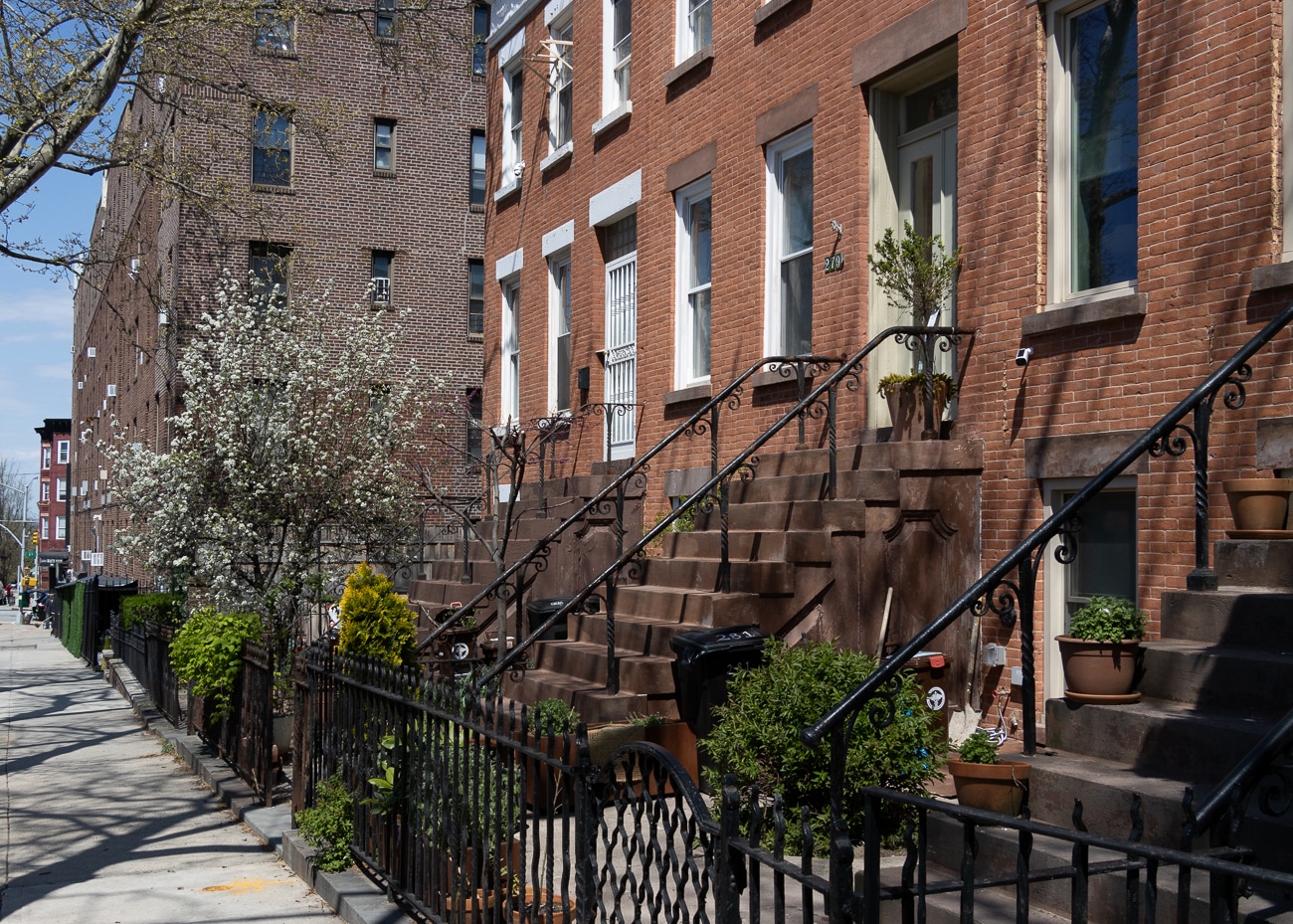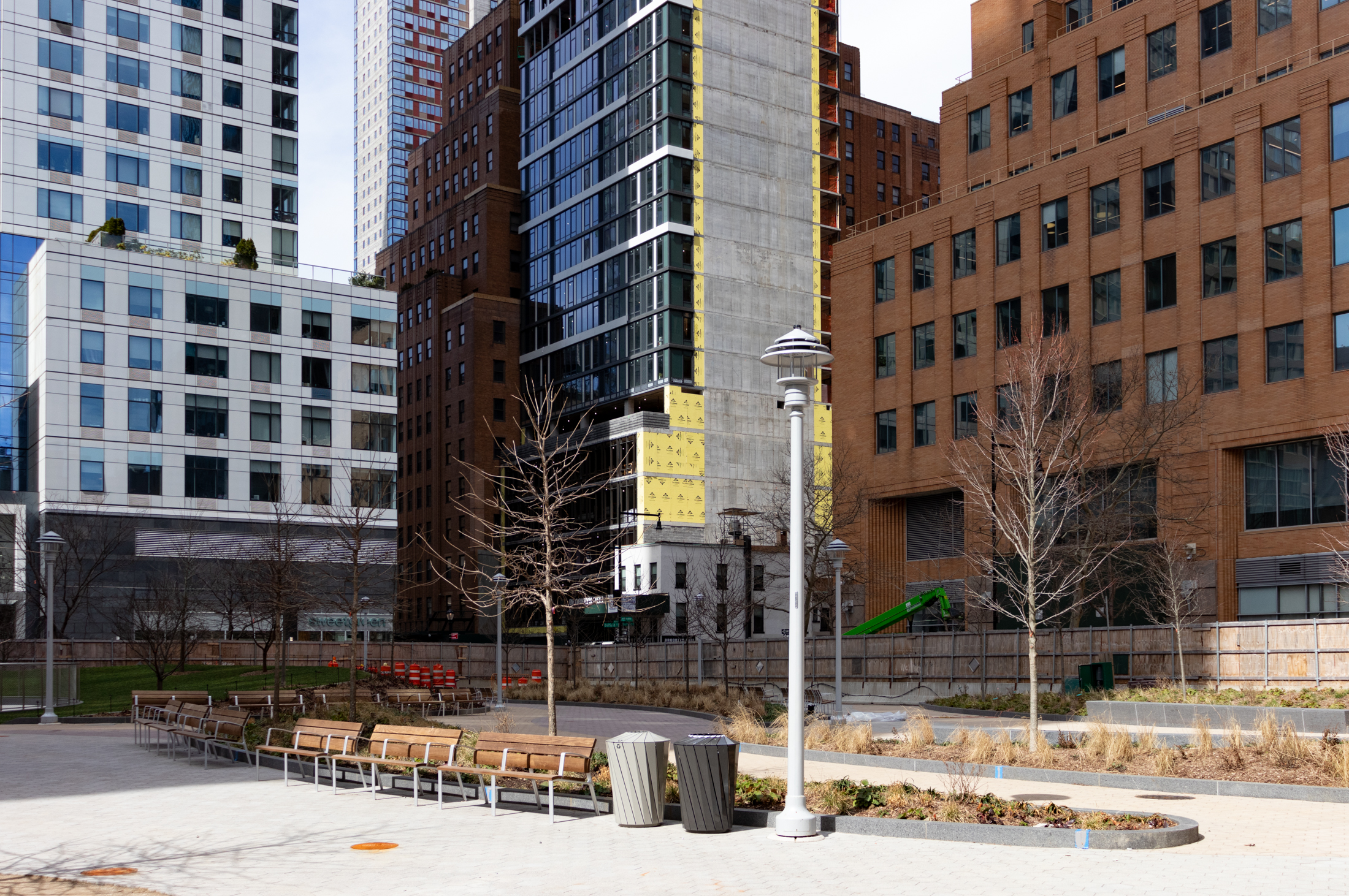Building of the Day: 471-479 Fulton Street
(Photo: Municipal Arts Society) Brooklyn, one building at a time. Name: former Oppenheim & Collins Dept. Store Address: 471-479 Fulton Street Cross Streets: Corner of Lawrence Street Neighborhood: Downtown Brooklyn Year Built: 1914-15 Architectural Style: Renaissance Revival Architect: Buchman & Fox Other works by architect: Manhattan’s Saks Fifth Avenue, Bonwit Teller and Bloomingdale’s store buildings….

(Photo: Municipal Arts Society)
Brooklyn, one building at a time.
Name: former Oppenheim & Collins Dept. Store
Address: 471-479 Fulton Street
Cross Streets: Corner of Lawrence Street
Neighborhood: Downtown Brooklyn
Year Built: 1914-15
Architectural Style: Renaissance Revival
Architect: Buchman & Fox
Other works by architect: Manhattan’s Saks Fifth Avenue, Bonwit Teller and Bloomingdale’s store buildings.
Landmarked: No, but attempts have been made to landmark much of the Fulton Mall area for years.
The story: Many of the storefronts in the Fulton Mall have been so altered over the years that we often walk right past a great building without really seeing it. Like 34th Street in Manhattan, Fulton Street and the surrounding area of Downtown Brooklyn was the retail capital of Brooklyn, home to not only small shops, but headquarters and major branches of large and important department stores. This was one of them, the former Oppenheim & Collins store.
Albert D. and Charles J. Oppenheim started out in 1871 as Manhattan skirt manufacturers, and 30 years later opened their first women’s store, in Manhattan at Broadway and 21st Street, in 1901. By the teens, they moved into a swanky new headquarters at 35 West 34th Street, a handsome limestone building that still stands, wisely predicting that 34th Street would become the center of shopping. Oppenheim & Collins had gained a reputation for expensive, quality women’s clothing, and soon had branches in many cities, including Buffalo, Newark, Philadelphia, Cleveland, and of course, Brooklyn. Their first store in Brooklyn was further down on Fulton Street, at the corner of Bridge St, another BOTD in-waiting.
Even though the Brooklyn store was so close to their Manhattan establishment, the popularity of Oppenheim & Collins’ goods was such that they needed to expand, and this site was chosen. The architects were Albert C. Buchman and Mortimer J. Fox, who were a well -known Manhattan-based firm that specialized in department stores and apartment buildings. They were the architects of Saks Fifth Avenue, Bloomingdale’s and Bonwit Teller’s. They also had some fine residential architecture under their belts.
Their designs for Oppenheim & Collins were quite subdued, considering some of their lavish work, but suited the site well, with a curved façade facing both Lawrence and Fulton Streets. Their store had large display windows, of a generous double height, which enticed shoppers to come in and spend. The company initials are on a crest on the parapet at the center of the building.
In 1945, they were purchased by the City Stores chain, and in the 1950’s, merged with Franklin Simon & Co, although both stores kept their own names and markets, until 1961, when the entire operation became Franklin Simon. City Stores went bankrupt in 1979, closing all of the Franklin Simon stores. The Brooklyn store had been sold to E. J. Korvette’s, a lower priced discount chain, sometime before that. Korvette’s called this location home until it, too, went under in 1980. It’s been a series of stores and office/classroom space ever since, and the ground floor display space is now unremarkable, obscuring this fine building’s place in New York retail history.GMAP










You briefly describe their first store on Bridge Street, and the subject building – built 1914-1915 – as the replacement. But in 1922, a newspaper article describes the Bridge Street location as being recently expanded, and the largest of their stores. Were both open simultaneously, or is there an error somewhere?
https://www.newspapers.com/article/the-standard-union-oppenheim-collins-bro/56358306/
Never mind, I get it. They had a store corner Fulton and Bridge. The new store was just an expansion of the old store. However, the article I refereced states that the balcony (mezzanine) level stretched all the way form Lawrence to Bridge. Either t hat was hyperbole, as the building currently occupies only half the block, or perhaps the “expansion” was later reduced back to only the new footprint.
a duel to the unconscious. terra cotta fragments at twenty paces.
a duel to the unconscious. terra cotta fragments at twenty paces.
This building….is barely conscious.
-look who’s talking!
A duel could settle this.
This building….is barely conscious.
-look who’s talking!
A duel could settle this.
I like this building.
It is very subdued and unpretentious. I could see this on the Main Street of some mid-western city such as Cedar Rapids or Omaha. Both of which I’m sure, were tempermentally and spiritually closer to Old Brooklyn than the overwrought Pagan city across the harbor.